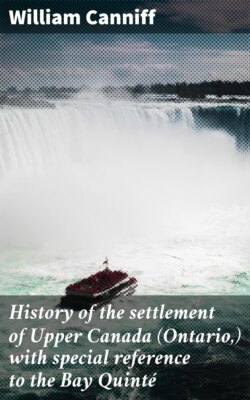Читать книгу History of the settlement of Upper Canada (Ontario,) with special reference to the Bay Quinté - William Canniff - Страница 36
На сайте Литреса книга снята с продажи.
THE QUEEN’S RANGERS.
ОглавлениеThis corps acted a very conspicuous part during the war. It was raised by Major Robert Rogers, of New Hampshire, son of James Rogers. He had served during the French war, with distinction, as commander of Rogers’ Rangers, and was, “in 1776, appointed Governor of Michilimackinac. During the early part of the rebellion he was in the revolting states, probably acting as a spy, and was in correspondence with the rebel Congress, and with Washington himself. He was imprisoned at New York, but was released on parole, which, it is said, he broke (like General Scott in 1812), and accepted the commission of colonel in the British army, and proceeded to raise the corps mentioned.” About 1777 “he went to England, and Simcoe succeeded him as commander of the Queen’s Rangers.”
Sabine, speaking of John Brown Lawrence, says he was imprisoned in the Burlington gaol, New Jersey, and that “Lieut.-Colonel John G. Simcoe, commander of the Queen’s Rangers, was a fellow-prisoner, and when exchanged said, at parting, ‘I shall never forget your kindness.’ He did not: and when appointed Lieutenant-Governor of Upper Canada, he invited Mr. Lawrence to settle there,” and, through the Governor, he acquired a large tract of land.
The Queen’s Rangers were disbanded in 1802, having been associated with the events of the first government of Upper Canada, their colonel (Simcoe) having been the first Governor. A detachment of this regiment were stationed upon the banks of the Don, before there was a single white inhabitant where now stands Toronto.
